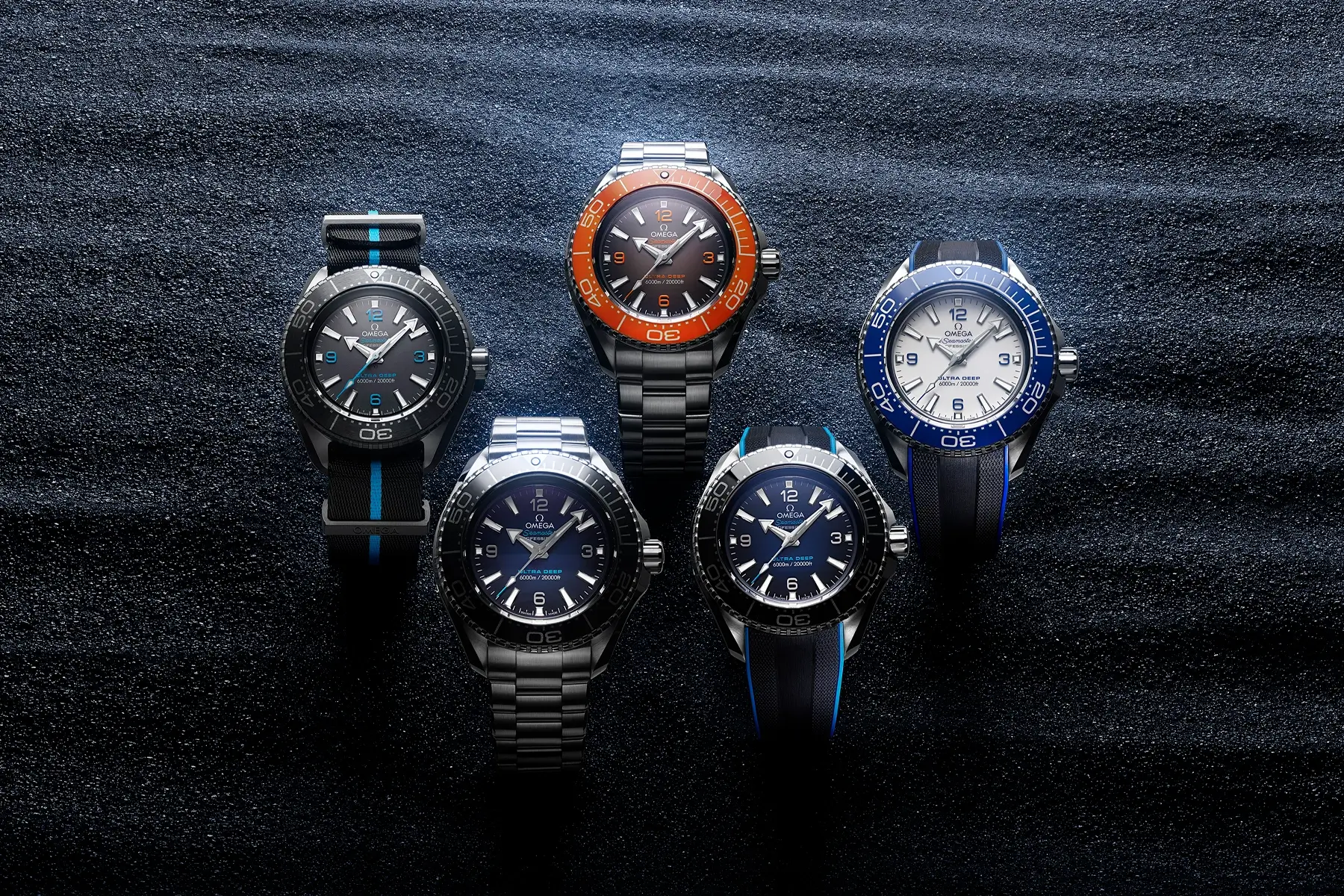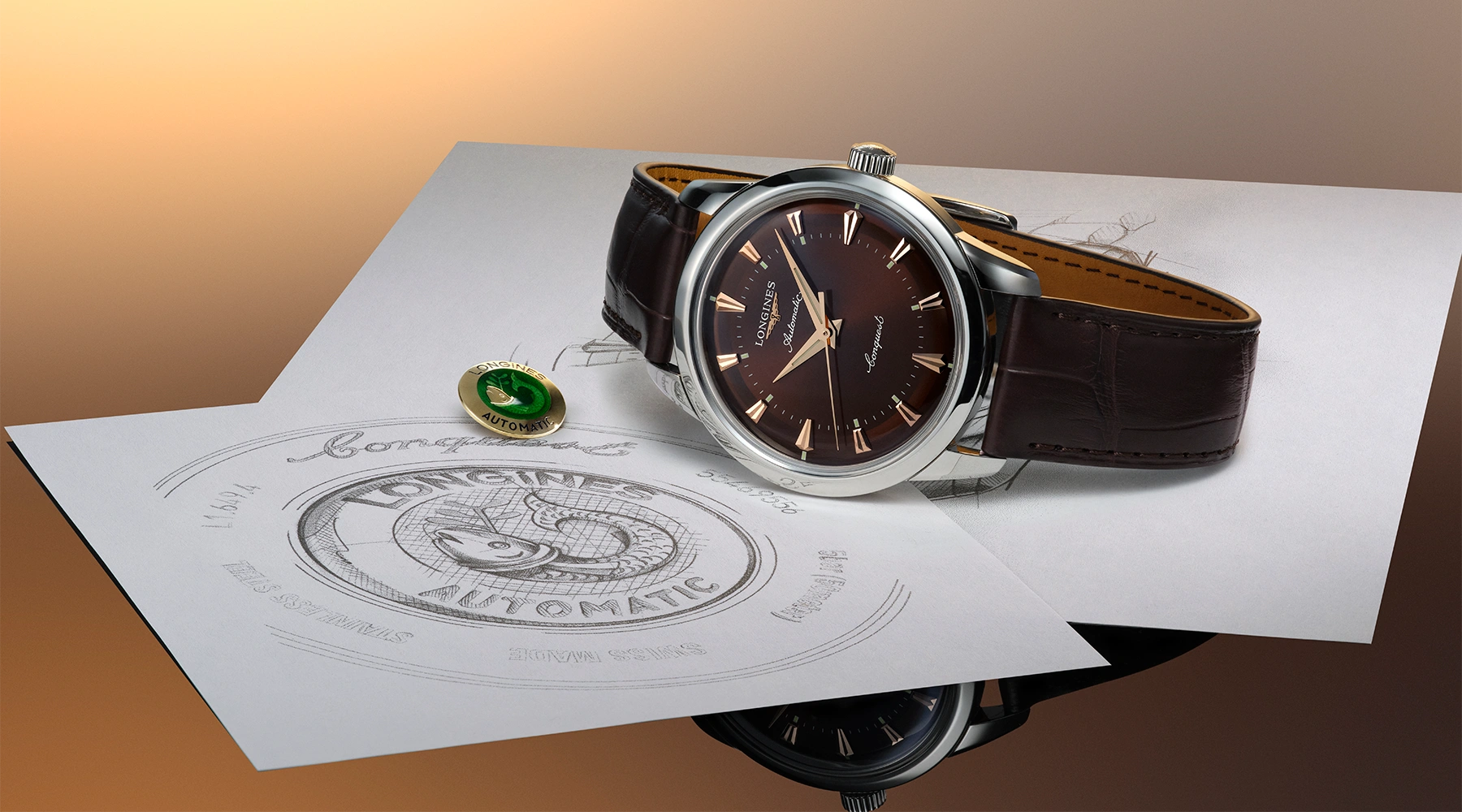- Watch Knowledge
The Essential Watch Movements Every Collector Should Know
17 Mar 2025

Whether it’s the digital display on a wall clock or the non-stop ticking from a wristwatch, the way we measure and view time has not really changed. Watches today are far more precise, but they still run on an engine that’s called a ‘caliber’ or watch movement. The term originates from Arabic, meaning a casting mould. It references the shapes of watch movements and components, such as bridges from particular watchmakers. Caliber also refers to the diameter of a gun barrel, and is used in fine watchmaking to indicate the size of a movement. This is in metric (mm) or the French unit, ligne (=2.2558mm).
While many watch brands have developed their own calibers today, they can be grouped into several key categories. Whether utilitarian or complex, they each have qualities that offer unique appeal to watch enthusiasts. And they all have an interesting back story that adds to their value.
The High Precision Quartz Movement

The Chopard Happy Diamonds Icons collection features a highly precise and compact quartz movement to achieve its dainty design aesthetic. (Credit: Chopard)
The emergence of the quartz watch is closely related to the arms and space race of the 1960s. The need for precision timekeeping, especially in the pursuit of a Moon landing, led to a rise in electronic timekeeping. A quartz oscillator resonates at a precise frequency of 32,768Hz when a small charge is passed through it. It is coupled with a series of transistors that reduce the frequency to one pulse per second, which accurately indicates the time. With a magnetized motor, this drives a conventional gear train to display the seconds, minutes, and hours on a watch dial. Since it oscillates at a much higher frequency, quartz offers great precision in the range of seconds per year.

The Reflection de Cartier bracelet incorporates a quartz watch movement and dial within a section of the jewellery piece, allowing the brand to express its identity freely. (Credit: Cartier)
The engineering and construction of a quartz movement in fine watchmaking combines traditional techniques and design with integrated electronics. Screwed-down plates and bridges are finished by hand and often feature techniques such as Côtes de Genève, polished chamfers and angles, and brushed finishes on the gear wheels. This also extends to the case, dial, and bracelet or buckles of the watch. The key difference is in the thickness of the movement, which is very slim in quartz watches. This gives brands the creative freedom to design with a focus on aesthetics, something jeweller-watchmakers such as Chopard and Cartier delight in.

An example of a solar quartz movement is the caliber TH50-00 used in the TAG Heuer Aquaracer Professional 200 Solargraph, which requires 40 hours of light exposure to keep the watch running for 10 months. (Credit: TAG Heuer)
Some collectors worry about battery leakage in a high-end watch equipped with a quartz movement. To resolve this concern, fine watchmakers have adopted the use of solar-powered quartz movements in recent years. These watches have transparent solar cells or translucent/polarised dials that allow light to pass through partially onto a solar panel. The generated electricity goes to a capacitor that drives the quartz movement and also charges a battery to power the movement when no light is available. The benefit of these solar quartz movements is that they don’t require battery replacements, and can run for months without needing light exposure. However, compared with cell batteries, which last for years, they require more frequent use or at least, exposure to light, in order to keep running.
The Automatic and Hand-Wound Mechanical Movement

The TUDOR Black Bay Ceramic “Blue” with black ceramic case and bezel insert, blue domed dial, and matching hybrid leather-and-rubber strap. (Credit: TUDOR)
The watch movement that’s most commonly seen in the industry after quartz is the self-winding or automatic mechanical movement. Unlike quartz, mechanical movements do not rely on a battery for power; instead, they use a highly tensed spring bound within a slim barrel to drive the gear train of the watch. The potential energy stored in the spring is converted to kinetic energy that turns the barrel, which is connected to the pinion of the hour wheel and the rest of the gear train. The entire system is regulated by an escape wheel that is propelled via pallets at a pace determined by the controller – an oscillating balance wheel with a finely tuned balance spring that winds and unwinds with each oscillation. The contact between the pallet and escape wheel is what generates the tick-tock of the movement.

The NORQAIN Wild One Skeleton 42mm Turquoise has a self-winding movement that is fully skeletonised so that its owner can observe its operation, from how the mainspring unwinds to the balance spring’s oscillation. (Credit: NORQAIN)
In automatic mechanical movements, an oscillating weight is also attached to the barrel with a separate gear to re-wind the mainspring and keep the movement constantly powered. It’s powered by the wearer – the weight swings back and forth with any wrist movement, driving a wheel on the barrel to turn it. When an automatic watch is not worn for some time, the spring will fully unwind and require winding via the crown. Oscillating weights may be fully sized, skeletonised, or assembled as micro-rotors or peripheral weights that do not add thickness to a movement.
Naturally, a massive rotor can often block the view of a watch movement in its entirety. Self-winding gears also require maintenance for optimal performance, which is why many collectors still prefer a handwound or manually-wound movement. They can be skeletonised or open-worked like the Bvlgari BVL 199 SK caliber, which drives the Octo Finissimo Skeleton 8 Days, or housed more classically with decorated bridges that shield the movement from shock.
The Simple and Complete Calendar Movements

Blancpain’s Villeret Quantième Complet (left) and Quantième Phases de Lune (right) are prime examples of analog-digital calendar watches. (Credit: Blancpain)
Dates are usually shown on a wristwatch in a small window. This practice began in 1945 and represents the common standard in the industry today. A toothed date ring on the circumference of the movement is connected to the gear train, and as the hour hand approaches midnight, or instantly at midnight, it’s advanced to the next date. In an analog calendar, this is approximately the same except a date pointer hand jumps forward on the dial.
However, there are more complex calendar versions that are found in mechanical movements such as the moon phase indicator and complete calendar. The former tracks the lunar cycle together with the civil calendar, allowing one to view the phases of the moon conveniently on the dial. This is historically important as religious and cultural events in many societies followed the lunar calendar.

Another variation of the date display is the large or grande date, which has two separate discs for a double-digit date. It’s often seen in German watchmaking, such as the Glashütte Original PanoReserve shown here. (Credit: Glashütte Original)
As more details are provided on a calendar watch, the movement becomes more complex in its design. This is because the Gregorian calendar is not consistent. Calendar watches which do not automatically adjust for the changes in days, dates, or months are described as ‘simple’. The full or complete calendar indicates the day, date, and month, either via analog counters or hands; through a window or windows; or a combination of the two. These require multiple adjustments for the days and dates in shorter months every year; hidden adjustors are usually hidden on the sides of the case in order to shift the indicators manually.
The Standard and Flyback Chronograph Calibers

The high-frequency stopwatch Compteur de Tierces developed by Louis Moinet in 1816. (Credit: Louis Moinet)
The chronograph is a timing function that’s added to a standard mechanical movement to measure elapsed time. First developed by Louis Moinet in 1816, the stopwatch was also the first high-frequency chronograph with a 30Hz balance (216,000vph). There were two pushers for the start, stop, and reset functions and four displays for the tenths of a second, seconds, minutes, and 12-hour totalisers. The format set by Moinet largely remains today, with most chronograph movements showing the elapsed seconds, minutes and hours.

The OMEGA caliber 3861 is an excellent example of the cam-and-lever-actuated chronograph. It demonstrates how the two variants are different in execution, rather than quality. (Credit: OMEGA)
There are many different types of chronographs, and they differ in how they are controlled (column wheel or cam-lever), designed, and utility. Each has its own benefits, and although some collectors have opinions on which is better, it is the quality of the movement and skill of the watchmaker that really determines their performance.
1. Column-wheel or Cam-lever Actuated?
Chronograph functions are controlled in two ways: via a cam-lever or column wheel, that control how the gears are engaged (horizontally, vertically, or via an oscillating pinion). This pinion, developed by TAG Heuer in 1887, switches slightly back and forth to engage the chronograph’s gear train with the timekeeping gear train. The column wheel is a more complex system controlling the chronograph’s operation, with a lower level that engages the movement. One key difference is in how they brake the chronograph; in a cam-lever, the chronograph runner is held in place by brakes on the minute indication and a tension spring, while a column wheel brakes the chronograph runner directly.

The Breitling B01 caliber, developed in 2009, is one of the most robust integrated chronograph movements in the market today, with a chronometer certification and 70 hours of autonomy with a fully-wound mainspring. (Credit: Breitling)
The effect is most clearly noticeable when the chronographs are activated. Column-wheel chronographs pushers offer a smooth press up until the operating lever triggers the programmed action. Cam-levers have a one-two push, requiring firmer pressure. In well-engineered cam-lever movements such as the OMEGA caliber 3861, which features sharp teeth to ease wheel meshing when the chronograph is activated, performance differences are invisible to the human eye.
2. Integrated or Modular?

The Longines Master Collection Chronograph is equipped with the caliber L688.2, a modernised version of the Valjoux 7750 chronograph. (Credit: Longines)
Some chronograph movements are integrated into their design, while others are modular add-ons that fit most movements according to common measurements. As the cam-and-lever system and oscillating pinion can be mass-manufactured, they are more commonly modular. Column-wheel chronographs are often integrated, but it’s not a hard rule: the renowned Valjoux 7750 chronograph is an integrated cam-lever chronograph. The easiest way to tell is by looking at the pushers and crown: if they are not aligned, the chronograph is a module added over the base movement (these also tend to be thicker in design). Integrating offers one benefit: activating the chronograph does not affect timekeeping precision significantly.

The first mechanical chronograph produced by Grand Seiko, the Tentagraph, features the automatic caliber 9SC5 with a column wheel, vertical clutch, and high-frequency regulator. (Credit: Grand Seiko)
Modern integrated chronograph movements such as the Breitling B01 or Grand Seiko 9SC5 calibers forego the traditional horizontal clutch for vertical coupling. Vertically coupled chronographs hoist the chronograph wheel above the plate of the drive or fourth wheel via levers and set it down when activated. The friction fit minimises the flicker that occasionally occurs when a horizontally coupled chronograph is started; this is due to the teeth of the two wheels meshing imperfectly.
3. Standard or Flyback?

The Agengraphe, designed by Jean-Marc Wiederrecht’s Agenhor manufacture, is a remarkable chronograph that achieves great performance thanks to a hybrid design. (Credit: Singer Reimagined)
Cam-and-lever actuated chronographs are like a logic gate for the chronograph function; they only have two settings that can be programmed. Column-wheels have three positions that can be programmed, which is why some of them include a ‘flyback’ or instant reset function. Invented by Longines in 1925 and patented a decade later, the function engages the heart cams of the chronograph gear train without engaging the brakes. The indicators jump back to zero and a new timing event is started.

Singer Reimagined’s Track 1 series which runs on the Agengraphe, demonstrates its special features. (Credit: Singer Reimagined)
This has great use for anyone measuring continuous lapping events, such as a segment of a flight in the early 20th century, or an automobile on a race track. One of the most intelligent designs of a flyback chronograph today is the Agengraphe by Jean-Marc Wiederrecht. Composed of four modules, each providing a function, it offers numerous technical innovations. The regulating module allows the fine adjustment of the balance wheel by tensing or loosing the hairspring, and the movement is reversed so the oscillating weight shows on the dial side. This leaves the entire chronograph in plain view via the case back.
The clutch system is a hybrid, with a low profile and energy consumption with a vertical clutch’s precision. This ensures an instant minute jump at ‘60’, and shrinks the timekeeping gears to the centre, giving more space to the chronograph. A core benefit as well is the ease of switching out elements of the movement for different configurations. It’s a modular integrated chronograph with the best of horizontal and vertically coupled chronographs, and more. For chronograph lovers, this is truly the best in show, outside of the next level of even more sophisticated movements.
Discover more brands with Cortina Watch online, visit us at our boutiques, or contact a sales representative today to learn more.









